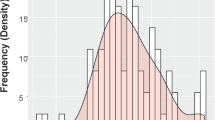Abstract
Retinal degeneration leads to release of cell-type specific proteins into the adjacent compartment. Here we investigated whether the neurofilament heavy chain protein (NfH) could be measured from the vitreous body and anterior chamber fluid. This prospective study included 85 patients who underwent vitrectomy (44 retinal detachment, 12 macular hole, 15 epiretinal gliosis, 8 organ donors) or trabelectomy (six glaucoma). The cut-off level was calculated from the organ donors. An established enzyme-linked immunosorbent assay (ELISA, SMI35) was used for quantification of NfH (190–210 kDa). Measurable levels of NfH were detected from the vitreous body homogenate, but not from the anterior chamber fluid. The cut-off level was 0.29 ng/mL. A significant proportion of patients suffering from retinal detachment (43.2%, mean 0.74 ng/mL) had vitreous body NfH levels above cut-off when compared to organ donors (0%, 0.12 ng/mL, p = 0.02), epiretinal sclerosis (1.6%, 0.05 ng/mL, p = 0.01), macular hole (0%, 0.04 ng/mL, p = 0.004). Following retinal detachment, vitreous NfH-SMI35 levels correlated with time from onset (R = −0.3, p < 0.05), persisting for up to 2 years. This study shows that NfH can be quantified from the human vitreous body and may be a useful novel biomarker for retinal degeneration. The method can be applied for investigating the dynamics of retinal degeneration and the response to neuroprotective strategies in a broad range of retinal diseases in either clinical or experimental research.



Similar content being viewed by others
References
Balaratnasingam C, Morgan WH, Bass L, Matich G, Cringle SJ, Yu D (2007) Axonal transport and cytoskeletal changes in the laminar regions after elevated intraocular pressure. Invest Ophthalmol Vis Sci 48:3632–3644
Balaratnasingam C, Morgan WH, Bass L, Cringle SJ, Yu DY (2008) Time-dependent effects of elevated intraocular pressure on optic nerve head axonal transport and cytoskeleton proteins. Invest Ophthalmol Vis Sci 49:986–999
Fatt I (1975) Flow and diffusion in the vitreous body of the eye. Bull Math Biol 37:85–90
Fowlks WL (1963) Meridional flow from the corona ciliaris through the pararetinal zone of the rabbit vitreous. Invest Ophthal 2:63–71
Golling M, Kellner H, Fonouni H, Rad MT, Urbaschek R, Breitkreutz R, Gebhard MM, Mehrabi A (2008) Reduced glutathione in the liver as a potential viability marker in non-heart-beating donors. Liver Transpl 14:1637–1647
Groetzner J, Kaczmarek I, Meiser B, Muller M, Daebritz S, Uberfuhr P, Reichart B (2002) The new German allocation system for donated thoracic organs causes longer ischemia and increased costs. Thorac Cardiovasc Surg 50:376–379
Hayreh SS (1966) Posterior drainage of the interocular fluid from the vitreous. Exp Eye Res 5:123–144
Kashiwagi K, Ou B, Nakamura S et al (2003) Increase in dephosphorylation of the heavy neurofilament subunit in the monkey chronic glaucoma model. Invest Ophthalmol Vis Sci 44(1):154–159
Kubay OV, Charteris DG, Newland HS, Raymond GL (2005) Retinal detachment neuropathology and potential strategies for neuroprotection. Surv Ophthalmol 50:463–475
Maurice DM (1957) The exchange of sodium between the vitreous body and the blood and aqueous humor. J Physiol 137:110–125
Lee MK, Cleveland DW (1996) Neuronal intermediate filaments. Ann Rev Neurosci 19:187–217
Ou B, Ohno S, Terada N, Fujii Y, Ueda H, Chen HB, Tsukahara S (1997) Ultrastructural study of axonal cytoskeletons in the optic nerve damaged by acutely elevated intraocular pressure using the quick-freezing and deep-etching technique. Ophthalmic Res 29:48–54
Pease ME, McKinnon SJ, Quigley HA, Kerrigan-Baumrind LA, Zack DJ (2000) Obstructed axonal transport of BDNF and its receptor TrkB in experimental glaucoma. Invest Ophthalmol Vis Sci 41:764–774
Petzold A (2005) Neurofilament phosphoforms: surrogate markers for axonal injury, degeneration and loss. J Neurol Sci 233:183–198
Petzold A, Shaw G (2007) Comparison of two ELISA methods for measuring levels of the phosphorylated neurofilament heavy chain. J Immunol Methods 319:34–40
Petzold A, Keir G, Green AJE, Giovannoni G, Thompson EJ (2003) A specific ELISA for measuring neurofilament heavy chain phosphoforms. J Immunol Methods 278:179–190
Petzold A, Islam N, Plant GT (2004a) Transient monocular blindness: the controversial role of the ophthalmic artery. J Neurol 250:501–502
Petzold A, Rejdak K, Plant GT (2004b) Axonal degeneration and inflammation in acute optic neuritis. J Neurol Neurosurg Psychiatry 75:1178–1180
Shah RB, Yang Y, Khan MA, Faustino PJ (2008) Molecular weight determination for colloidal iron by Taguchi optimized validated gel permeation chromatography. Int J Pharm 353:21–27
Shaw G, Yang C, Ellis R, Anderson K et al (2005) Hyperphosphorylated neurofilament NF-H is a serum biomarker for axonal injury. Biochem Biophys Res Comm 336:1268–1277
Shaw G (1998) Neurofilaments. Springer-Verlag. ISBN: 3-540-64715-5
Teunissen CE, Dijkstra C, Polman C (2005) Biological markers in CSF and blood for axonal degeneration in multiple sclerosis. Lancet Neurol 4:32–41
Yuan A, Rao MV, Sasaki T, Chen Y, Kumar A, Veeranna, Liem RK, Eyer J, Peterson AC, Julien JP, Nixon RA (2006) Alpha-internexin is structurally and functionally associated with the neurofilament triplet proteins in the mature CNS. J Neurosci 26:10006–10019
Author information
Authors and Affiliations
Corresponding author
Rights and permissions
About this article
Cite this article
Petzold, A., Junemann, A., Rejdak, K. et al. A novel biomarker for retinal degeneration: vitreous body neurofilament proteins. J Neural Transm 116, 1601–1606 (2009). https://doi.org/10.1007/s00702-009-0316-8
Received:
Accepted:
Published:
Issue Date:
DOI: https://doi.org/10.1007/s00702-009-0316-8




